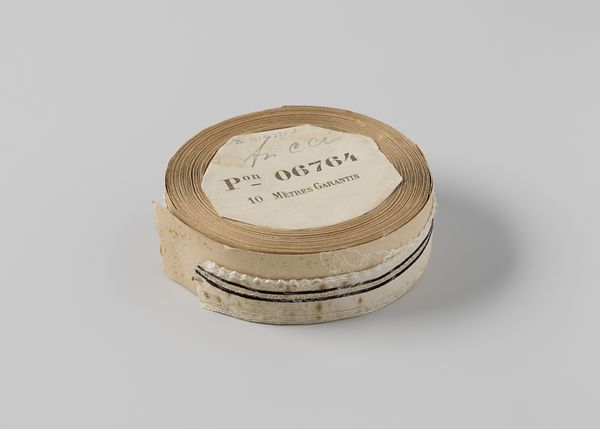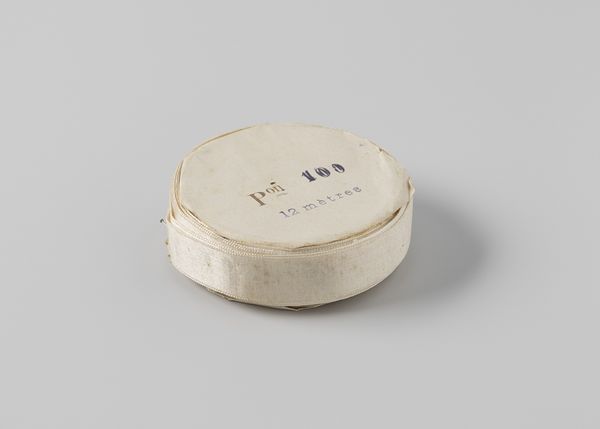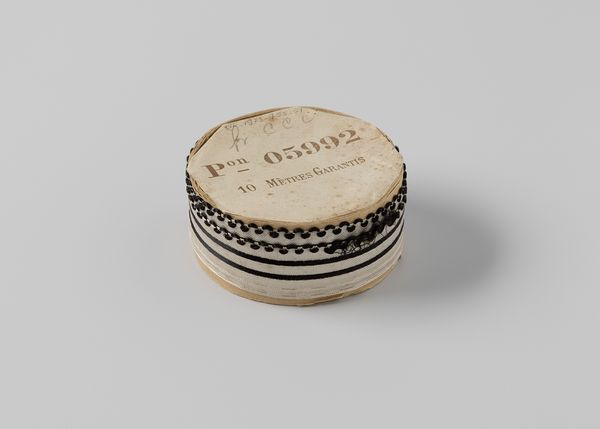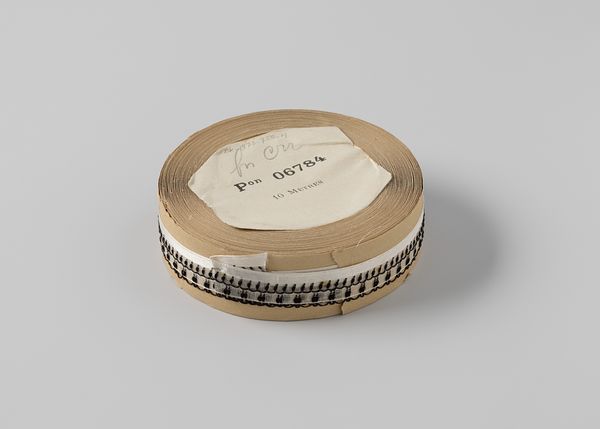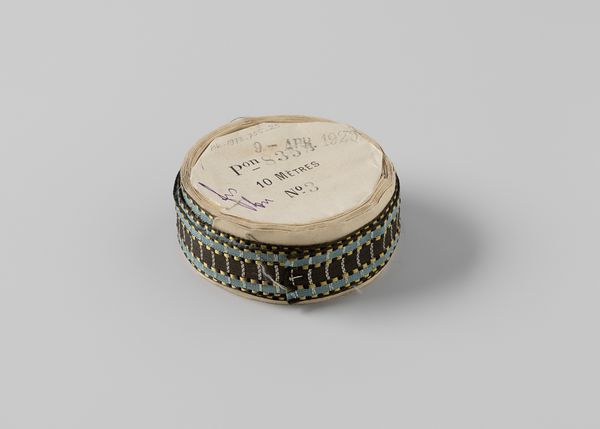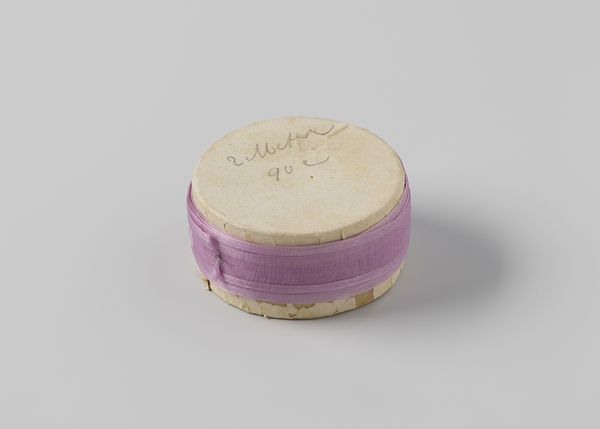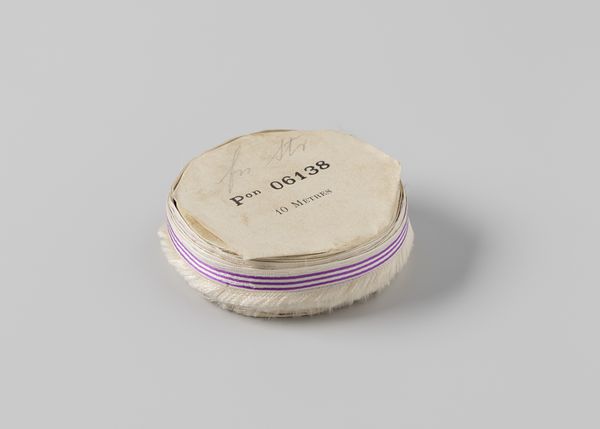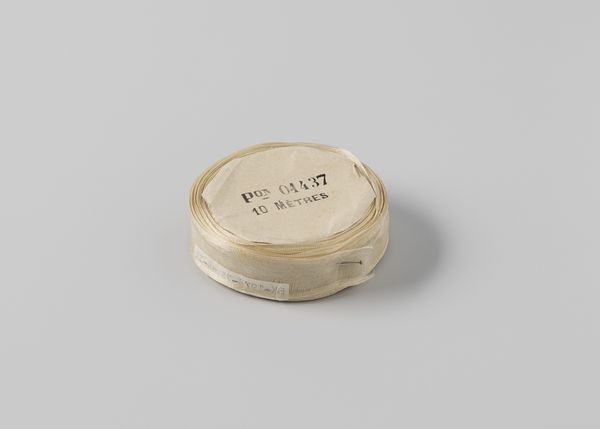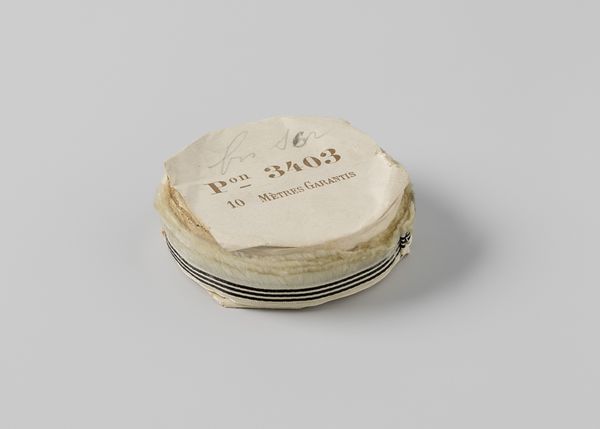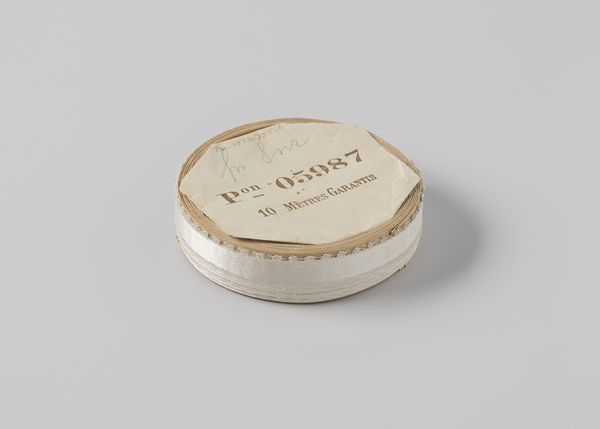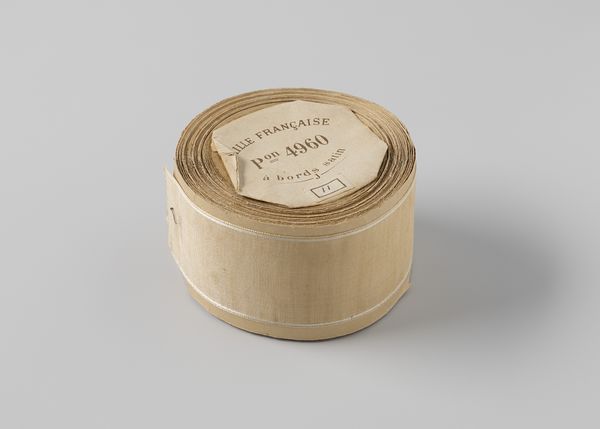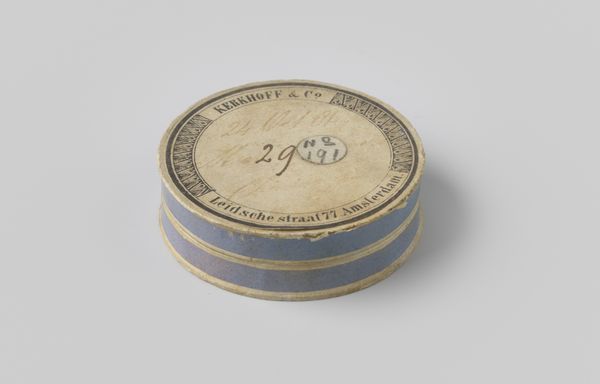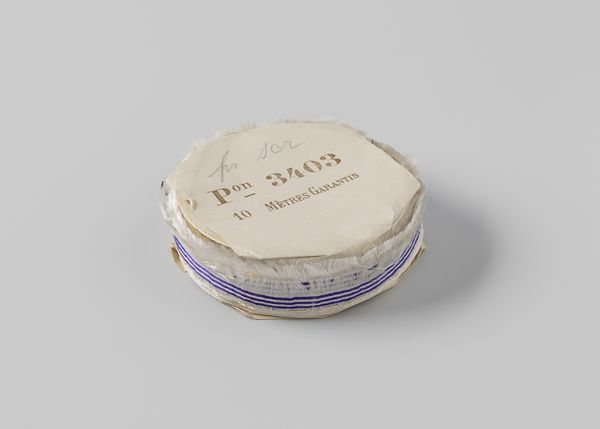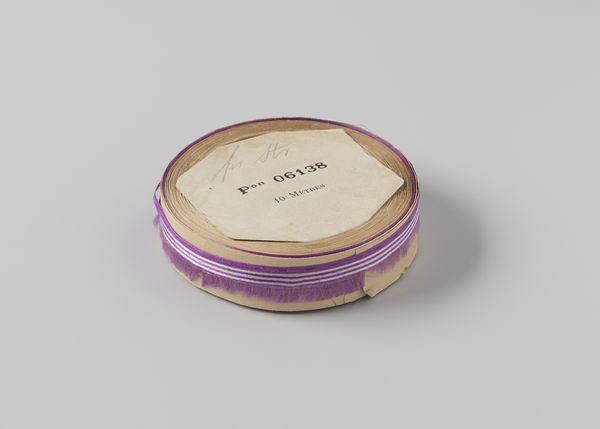
Lint op rol, wit satijn met in het midden een streep ajourwerk gevat tussen twee strepen zwart, één zijde is geschulpt en afgezet met een golvende rand in wit c. 1890 - 1935
0:00
0:00
print, photography
#
studio photography
#
advertising product shot
#
product studio photography
#
product shot
#
staged studio photograpy
#
still-life-photography
# print
#
appropriation
#
lifestyle product photography
#
photography
#
product design photgrpaphy
#
geometric
#
graphic design product photography
#
product photography
#
retail photography
Dimensions: width 2 cm, diameter 7.2 cm
Copyright: Rijks Museum: Open Domain
Editor: This is a photograph from between 1890 and 1935, housed at the Rijksmuseum, entitled "Lint op rol, wit satijn met in het midden een streep ajourwerk gevat tussen twee strepen zwart, één zijde is geschulpt en afgezet met een golvende rand in wit," which appears to be a roll of ribbon, carefully arranged and photographed. What draws your eye to this seemingly simple object? Curator: The photograph's stark presentation interests me. We see an object meant for embellishment—ribbon— isolated and offered to the viewer, almost as raw material. Think about the social context; what would a photograph of ribbon, packaged like this, signify to someone at the turn of the century, compared to today? Editor: It seems very utilitarian, doesn't it? Practical and… perhaps aimed at consumers who sew? Curator: Exactly! The “10 metres garantis” suggests an emphasis on standardized production and consumer trust, reflecting the rise of industrial manufacturing. But also, examine the craft evident in the ribbon itself— the satin, the ajour work. Doesn't it speak to a tension between handmade and mass-produced goods, where even a product of industry aims to evoke quality and artistry? How does that contrast with mass production today? Editor: That's a fascinating point. So the photograph isn't just showing us a ribbon; it is capturing a specific moment in consumer culture and modes of production? Curator: Precisely! It encourages us to consider how even everyday objects carry layers of meaning related to labor, materials, and systems of commerce. Editor: I see. This has definitely opened my eyes to thinking more deeply about what materials tell us! Curator: Excellent. It's these everyday objects that reflect our society's values, processes, and our relationships with production and consumption.
Comments
No comments
Be the first to comment and join the conversation on the ultimate creative platform.
